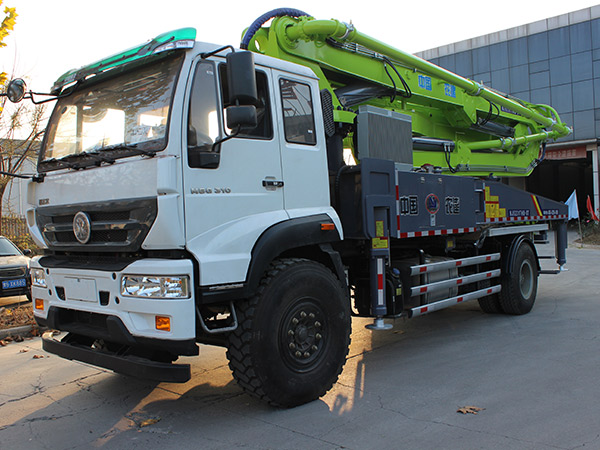Dutch electric vehicle expert Auke Hoekstra explained on Twitter, explaining why he believes that electric trucks such as Tesla Semi instead of hydrogen-powered trucks will monopolize most of the 40-ton semi-trailer and truck market and replace diesel.
Hoekstra is a researcher at the Eindhoven University of Technology in the Netherlands and the founder of Zenmo Simulation, a zero-emission energy and traffic simulation laboratory designed to provide scientific knowledge about energy and transportation systems. Hoekstra often drives Twitter and YouTube to debunk the myth of EV and cheer for the transformation of electric vehicles.
In a recent Twitter post, he responded to Bloomberg New Energy Finance founder Michael Liebreich (Michael Liebreich) comment on Daimler’s termination of its hydrogen fuel cell vehicle plan, saying that the move was “because of economic and inefficiency fundamentally. Pointless”.
On the contrary, Liebreich believes that Daimler’s recent announcement of cooperation with the Volvo Group to develop hydrogen fuel cells for heavy and long-distance transportation makes more sense.
I know the catenary/pantograph solution is very interesting. My expert is @AukeHoekstra, I know he is already a fan and is doing detailed research on economics. I am waiting for the result of breathing.
Liebreich’s view is that “short-range trucks are being electrified…long-range hydrogen trucks have opportunities to work” rather than trucks that use biological or synthetic fuel and battery electric vehicles or pantograph combinations. Then, Liebreich conducted an exclusive interview with Auke Hoekstra on the specific value and applicability of catenary and pantograph solutions.
Hoekstra’s main argument that electric trucks will monopolize the semi-truck market can be traced back to his debunking the International Energy Agency’s 2017 “Future of Trucks” survey results, which failed to include electric trucks (but since then) Updated, point Hawkestra in front).
In response to @MLiebreich’s topic (@bryworthington’s response), let me explain why I think eTrucks (not hydrogen, not trucks with overhead contact nets) will monopolize most of the 40-ton heavy-duty semi-truck market and exceed Diesel. //t.co/qq8xdLHxXx pic.twitter.com/cT736wnmyn
After Hawkestra added a plan for an electric truck with a cruising range of 400 kilometers, he found that “it can blow diesel and hydrogen out of the water, with almost no disadvantages”, and added that “Catenary is also great, but it needs international Agency cooperation”-As a result, Hawkestra did not hold his breath.
Hoekstra’s research conclusions are based on modern trucks that require an average of 1.3kWh/km and research on how companies drive near the port of Rotterdam. The conclusion is: “1.3 * 750 = 975 kWh or 1 MWh battery can provide a whole It’s a way of driving every day and charging in the garage overnight.”
This will of course cause weight issues, but by redesigning the truck with an electric motor close to the wheels, you can save 3 tons of weight with a 1MWh battery weighing 6 tons.
Suppose we use the current @Tesla Model 3 battery which is 4 kg/kWh (https://t.co/swN3AqrJNk). Let’s add 25% packaging and 25% packaging to provide better cycle life: 6kg/kWh.
However, since most trucks do not require the maximum capacity, and 40-ton trucks cause the largest CO2 emissions of all freight types, the electrification of semi-trucks with batteries saves what Hoekstra describes as “unparalleled CO2 per unit (and money! )the amount”. KWh battery. ”
If we electrify them, we will also use batteries for best results, because these trucks save unparalleled carbon dioxide (and money!) per kilowatt hour of batteries.
Although it is not necessary to invest in all alternatives in the pride and prosperity of battery electric vehicles, and to recognize that the niche uses of hydrogen fuel cells (such as long-distance truck transportation) will be important, it is not difficult to find that most medium and large trucks in the future are Battery powered.
Of course, this only reinforces the need to ensure that the base metals needed for electric vehicles are mined as sustainably as possible, which can be traced back to recent research that showed that these metals were mined from polymetallic nodules on the deep seabed of the Pacific Ocean. Compared with minerals that rely on traditional sources, the harm to the environment is less.
RenewEconomy and its sister websites One Step Off the Grid and The Driven will continue to publish during the Covid-19 crisis, release good news about technology and project development, and hold the government, regulators and enterprises accountable. But as the conference market evaporates and the budgets of some advertisers increase, readers can help us by voluntary donations here to ensure that we can continue to provide services for free and expand the audience as much as possible. Thanks for your support.
Post time: Oct-09-2020

